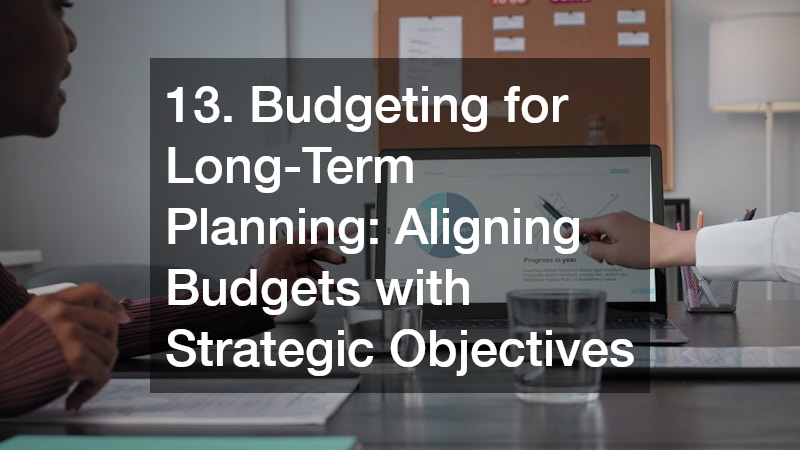
Budgeting is one of the cornerstones of sound financial management, both personally and professionally. For finance-savvy individuals, the ability to create, manage, and refine budgets is not just a skill—it’s a strategic asset. Whether you’re overseeing a corporate finance department, running your own business, or managing a household, understanding the key components of successful budgeting is crucial.
This article dives into the essential finance training topics that help sharpen your budgeting acumen. We’ll explore practical budgeting strategies, structural components, goal setting, analysis techniques, and the psychological behaviors behind budgeting success. Let’s break down the budgeting process from theory to execution.
What Is Budgeting and Why Is It So Important?
Before diving into the components, it’s vital to understand the definition and scope of budgeting. At its core, budgeting is the process of creating a plan to spend your money. This plan allows you to determine in advance whether you will have enough to do the things you need or want to do.
For finance professionals, budgeting is more than an exercise in frugality. It involves aligning organizational goals with financial planning, anticipating cash flows, managing resources, and identifying performance gaps. A successful budget offers clarity, controls, and direction, making it a critical component of any finance training curriculum.
1. Understanding Income Streams: Start with What You’re Working With
Why Is It Important to Know Your Income Sources?
A successful budget begins with a clear understanding of your income streams. Whether you’re managing a household, a startup, or a corporation, tracking all sources of revenue is essential for accurate financial planning.
Key considerations:
- Primary vs. secondary income: Identify all recurring and variable income.
- Net vs. gross income: Use net income (after taxes and deductions) for realistic budgeting.
- Revenue timing: Understand when income arrives (weekly, monthly, quarterly) to manage cash flow.
For organizations, this might include:
- Sales revenue
- Investment returns
- Grants or subsidies
- Royalties or licensing fees
Budgeting tip: Always err on the conservative side when estimating variable income.
2. Setting Financial Goals: The Foundation of Every Good Budget

Why Are Goals So Integral to Budgeting?
Every budget needs a purpose. Financial goals provide a target to aim for, helping prioritize spending and saving. In finance training, this aspect teaches not only how to set goals but how to make them SMART (Specific, Measurable, Achievable, Relevant, and Time-bound).
Examples of SMART financial goals:
- Save $10,000 in an emergency fund within 12 months
- Cut operational costs by 15% in Q3
- Increase revenue by 25% over the next fiscal year
- Allocate 10% of your income to retirement planning monthly
Without clear goals, even the most detailed budgets can become meaningless. They serve as the “why” behind your budget and influence how the rest of it is structured.
3. Identifying Fixed and Variable Expenses: Where the Money Goes
What’s the Difference Between Fixed and Variable Costs?
A thorough understanding of expenses is central to creating an effective budget. One of the most valuable finance training topics covers the classification of costs into fixed and variable.
Fixed expenses:
- Rent or mortgage
- Insurance premiums
- Salaries (in many cases)
- Subscriptions or leases
Variable expenses:
- Utilities
- Marketing or advertising spend
- Travel costs
- Inventory or raw materials
By categorizing and tracking expenses over time, you can spot trends, reduce unnecessary costs, and make informed adjustments to meet financial goals.
4. The Role of Cash Flow Management in Budgeting Success
How Does Cash Flow Impact Your Budget?
Cash flow management—the monitoring of money moving in and out—is another cornerstone of any finance training course. While budgeting plans future allocations, cash flow reflects financial reality in real-time.
Key techniques for managing cash flow:
- Regular cash flow forecasting
- Identifying peaks and valleys in revenue cycles
- Using rolling budgets or zero-based budgeting
- Ensuring liquidity buffers for slow periods
Without cash flow alignment, a budget can look good on paper while the business struggles to pay bills. Understanding and planning around your inflows and outflows helps avoid shortfalls and ensures your budget is executable.
5. Prioritizing Spending: Needs vs. Wants
How Do You Decide What to Fund First?
Budgeting requires making tough decisions. One essential finance training topic is teaching how to differentiate between needs and wants. This concept may seem basic, but it’s a major driver of budgeting success or failure.
Budget prioritization framework:
- Essential expenses: Must-haves like utilities, rent, payroll, and inventory.
- Strategic expenses: Marketing, R&D, professional development.
- Discretionary spending: Travel, team-building events, luxury upgrades.
Use this framework to protect your cash from “budget creep” and impulse allocations. In tight situations, having a pre-set list of priorities prevents panic decisions.
6. Using Technology and Budgeting Tools
Can Software Make Budgeting Easier and More Accurate?
Yes—leveraging budgeting tools is a must in today’s finance environment. Automation and data visualization provide a higher level of control, transparency, and insight. Most finance training programs now include modules on software such as QuickBooks, Microsoft Excel, Oracle NetSuite, or enterprise resource planning (ERP) systems.
Common budgeting features in financial tools:
- Forecasting capabilities
- Real-time data dashboards
- Expense tracking and categorization
- Scenario planning and simulations
Implementing the right software ensures consistency, scalability, and reduced error, especially in complex corporate budgets.
7. Tracking and Monitoring Performance
How Do You Measure If Your Budget Is Working?
Setting a budget isn’t enough; tracking performance ensures it delivers on expectations. This is where financial analysis and performance metrics come into play—an indispensable part of finance training.
Common tracking practices:
- Monthly or quarterly budget reviews
- Budget vs. actual variance reports
- Key performance indicators (KPIs), such as:
- Operating margin
- Cost-to-income ratio
- Burn rate
- Budget variance percentage
Monitoring helps you stay agile. When issues arise—like overspending or revenue shortfalls—quick action can prevent long-term damage.
8. Why Is Budgeting Training Essential in the Finance World?
This core question encapsulates why finance training is so critical for both individuals and organizations. Effective budgeting is not innate—it’s a learned skill that requires exposure to structured concepts, best practices, and real-world application.
Key components covered in professional finance training:
- Budget planning cycles (monthly, quarterly, annual)
- Capital vs. operational budgeting
- Forecasting models and techniques
- Budget approval and stakeholder involvement
- Scenario planning for economic shifts or business changes
By understanding and applying these components, finance-savvy individuals can create budgets that are not only efficient but also resilient in changing market conditions.
9. Contingency Planning: Preparing for the Unexpected
What Happens When Things Don’t Go as Planned?
One of the most overlooked components in budgeting is contingency planning, and it’s one that should be emphasized in every finance training program.
How to build contingency into your budget:
- Set aside an emergency reserve (typically 5–10% of total budget)
- Plan alternative scenarios (best case, expected, worst case)
- Include insurance and disaster recovery allocations
- Create adjustable budget categories that can be scaled up or down
Budgeting isn’t about predicting the future; it’s about preparing for it. Contingency planning gives you the flexibility to handle surprises without derailing your finances.
10. Communication and Stakeholder Engagement
Why Is Budget Communication Critical in Organizations?
Budgets are not standalone documents; they are part of a larger organizational ecosystem. Communicating your budget effectively ensures that team members, department heads, and stakeholders understand their roles and responsibilities.
Best practices for budget communication:
- Use plain, jargon-free language
- Present visual summaries and dashboards
- Hold regular budget review meetings
- Allow stakeholder feedback during the planning phase
In a corporate setting, finance training should emphasize how to align budgets with business objectives and how to communicate financial expectations across departments.
11. Reviewing and Refining the Budget
Is a Budget Ever Final?
No. A budget should be a living document that evolves as conditions change. One of the most actionable lessons from finance training is learning how and when to revise your budget.
Triggers for budget review:
- Market volatility or inflation
- Changes in revenue projections
- Operational expansion or downsizing
- Regulatory or tax changes
Set quarterly review checkpoints to assess performance, revise goals, and adapt allocations. Flexibility is not a weakness—it’s a budgeting strength.
12. Behavioral Finance: The Psychology of Budgeting
How Do Emotions and Habits Affect Financial Decisions?
Understanding the psychological side of budgeting can be a game-changer. Behavioral finance explores how emotions, biases, and decision-making patterns influence financial behavior. It’s a modern addition to finance training but increasingly valuable.
Common biases that affect budgeting:
- Optimism bias: Overestimating income or underestimating costs
- Anchoring: Clinging to old budget numbers despite new data
- Loss aversion: Avoiding necessary cuts to avoid perceived loss
Training that incorporates behavioral finance helps create budgets that are realistic, habit-forming, and aligned with long-term success.
13. Budgeting for Long-Term Planning: Aligning Budgets with Strategic Objectives

How Can Budgets Support Long-Term Financial Goals?
A well-crafted budget isn’t just a tool for day-to-day or monthly operations—it also plays a crucial role in achieving long-term strategic objectives. Finance-savvy individuals and organizations must learn how to align their budgeting process with larger financial plans, such as expansion, debt reduction, or investment in innovation. This topic is often included in advanced finance training, as it encourages proactive thinking and forward-looking financial management.
Key practices to integrate long-term planning into budgeting include:
- Capital expenditure planning: Allocate funds for large, long-term investments like equipment or real estate.
- Debt management strategies: Budget for loan repayments while minimizing interest burdens.
- Growth funding: Set aside funds for research, development, or business expansion initiatives.
- Reserve accumulation: Build reserves to weather downturns or capitalize on future opportunities.
- Alignment with KPIs: Ensure budgets reflect progress toward long-term key performance indicators.
When budgets reflect both current needs and future aspirations, they become strategic tools—not just financial trackers.
Final Thoughts: Putting It All Together
Successful budgeting is more than spreadsheet management—it’s a multi-layered process involving strategy, tools, people, and mindset. By mastering the components outlined above, finance-savvy individuals can elevate their decision-making, avoid financial pitfalls, and drive sustainable growth.
Investing in finance training that covers these key topics ensures that you’re not only building a strong budget but also building strong financial habits and systems that support your goals for the long haul.

